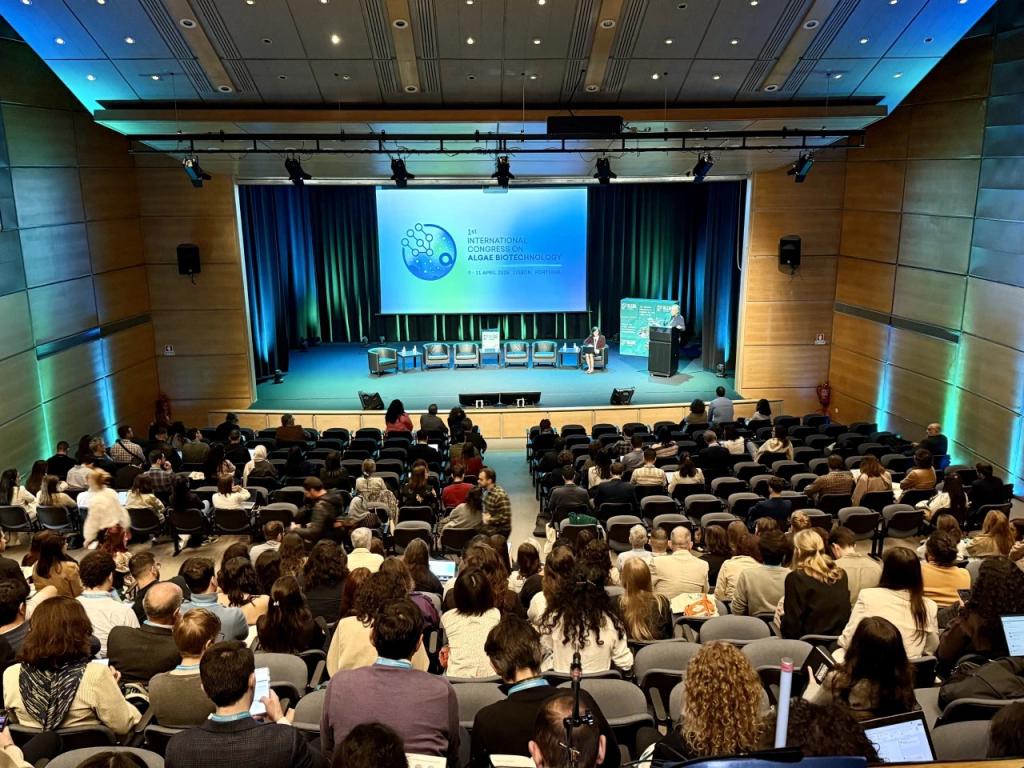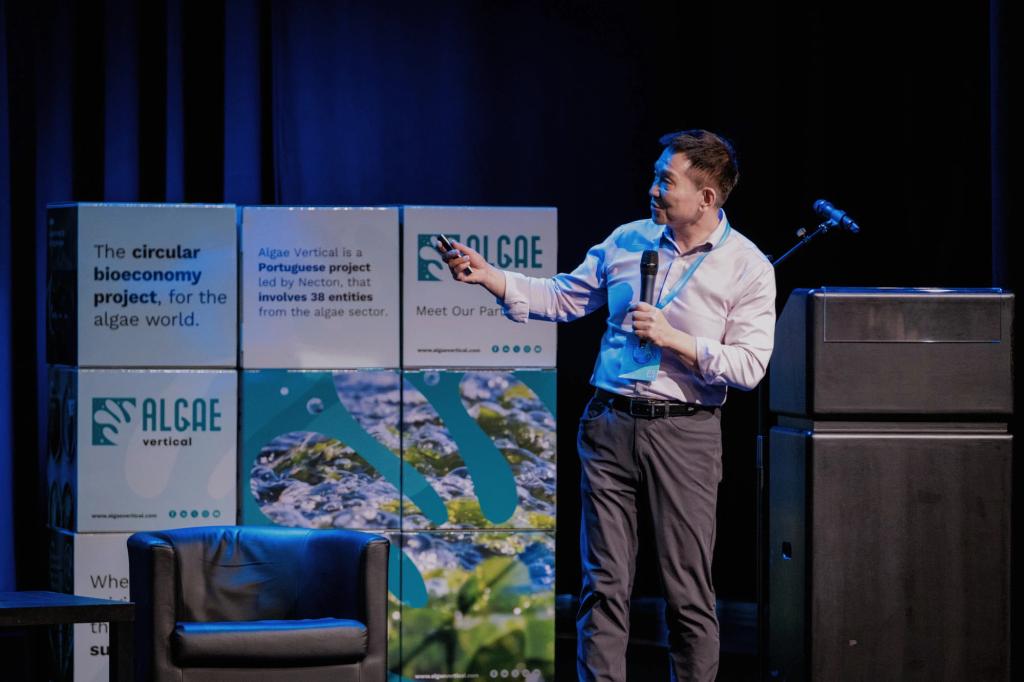
In April 2025, Professor Hu Qiang from the Faculty of Synthetic Biology at Shenzhen University of Advanced Technology was invited to participate in the 1st International Congress on Algae Biotechnology (ICAB 2025) held in Portugal. Organized by the Portuguese Algae Producers Association (PROALGA) and GreenCoLab, Professor Hu delivered a keynote speech titledMicroalgae Biomanufacturing:Advances, Challenges, and Emerging Pathwaysat the main forum.
As the former President of the International Society for Applied Phycology and a leading figure in China’s microalgae sector, Professor Hu provided a comprehensive overview of global microalgae biotechnology frontiers and industrialization progress, with a focus on China’s scientific breakthroughs and industrial contributions. His presentation built upon discussions from the 5th Microalgae Forum (Chengdu, March 2025), expanding the global perspective on microalgae biomanufacturing and industrial applications. Professor Hu highlighted China’s“scientific strength and industrial achievements”in the microalgae field:

China accounts for over 60% of the world’s microalgae-derived astaxanthin production capacity, securing a dominant position in this sector.A robust industrial cluster, led by enterprises such as Yunnan Alphy Biotech Co., Ltd. (Chuxiong), Yunnan Yuncai Jinke Biotechnology Co., Ltd. (Shilin), and Yunnan Boxin Biotech Co., Ltd. (Pingbian), has established a complete industrial ecosystem. This spans strain selection, photobioreactor design and construction, large-scale microalgae cultivation, natural astaxanthin extraction and preparation, to product development and market promotion, fully meeting domestic and international demand.
China produces 70% of the global spirulina supply.In applications, 90% of spirulina is used in health supplements and food additives, with only 10% applied as animal feed additives. To expand spirulina’s use in animal nutrition and health, leading Chinese enterprise Cibainian Biotech Co., Ltd., in collaboration with Algae Chain Ecological Technology (Lindian) Co., Ltd., pioneered a 10,000-tonne-scale “photovoltaic-algae integrated” resource utilization model. This approach uses photovoltaic green energy to drive large-scale microalgae cultivation while integrating animal farming wastewater treatment and resource recovery technologies, achieving higher production efficiency and lower costs. This innovation paves the way for large-scale spirulina applications in animal feed.
A research team from the Qingdao Institute of Bioenergy and Bioprocess Technology, Chinese Academy of Sciences, and Qingdao Zhongke Smart Cyano Biotech Development Co., Ltd. achieved a breakthrough in spirulina glycerol glucoside (GG) conversion.They developed the world’s first industrial production platform for algae-derived GG, achieving 99% product purity, recognized internationally as a “revolutionary breakthrough in microalgae cell factories”.This technology has enabled the application of algae-derived natural GG in cosmetics and medical aesthetics. With the establishment of spirulina transgenic systems, gene editing, and metabolic pathway reconstruction are now feasible, positioning spirulina as a super cell factory for producing various high-value compounds, with significant potential in nutrition and health sectors.
Professor Hu’s authoritative address not only showcased China’s global leadership in algae technology, from industrial scale to innovation standards, but also elevated China’s international influence in microalgae biotechnology and engineering. The success of ICAB 2025marks China’s transition from a “participant” to a “leader” in this field, contributing Chinese wisdom and solutions to the global development of algae biotechnology.
